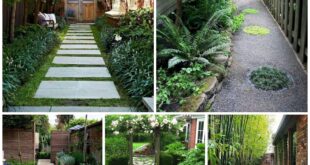A rainbow garden is a beautiful and vibrant addition to any outdoor space, providing a spectrum of colors that can brighten up your yard and lift your spirits. Designing a rainbow garden involves careful planning and selection of plants to create a harmonious blend of hues that resemble the colors of a rainbow. Here’s a comprehensive guide to help you design your own rainbow garden.
Planning Your Rainbow Garden
1. Choose the Location
The first step is to choose the right location for your rainbow garden. Select a spot that receives plenty of sunlight, as most colorful plants thrive in sunny conditions. Ensure the soil is well-drained and fertile to support healthy plant growth.
2. Decide on the Layout
Consider the shape and size of your garden. You can design a traditional rectangular bed, a circular pattern, or even a winding path that mimics the arc of a rainbow. Sketch out your garden plan on paper to visualize how the colors will flow together.
3. Select the Colors
A rainbow garden typically includes the seven colors of the rainbow: red, orange, yellow, green, blue, indigo, and violet. You can arrange the plants in a gradient to create a seamless transition from one color to the next.
Choosing the Plants
Red
- Roses: Classic and vibrant, red roses add a touch of elegance.
- Tulips: These spring-blooming bulbs provide a bold splash of red.
- Geraniums: Hardy and easy to grow, red geraniums are perfect for brightening up borders.
Orange
- Marigolds: These cheerful flowers bloom in shades of orange and are great for pest control.
- Calendula: Also known as pot marigold, this flower adds a sunny orange hue.
- Zinnias: Available in a variety of warm colors, including vibrant orange.
Yellow
- Sunflowers: Tall and majestic, sunflowers bring warmth and cheer.
- Daffodils: Early spring bloomers that light up the garden with their bright yellow petals.
- Coreopsis: These perennials have daisy-like flowers that add a splash of yellow.
Green
- Hostas: With their lush foliage, hostas add texture and greenery.
- Ferns: Perfect for shaded areas, ferns provide a variety of green shades.
- Sedum: These succulent plants are easy to grow and come in various green tones.
Blue
- Hydrangeas: Known for their large, blue flower clusters.
- Delphiniums: Tall spikes of blue flowers that make a stunning statement.
- Salvia: With its deep blue flowers, salvia is a pollinator favorite.
Indigo
- Iris: The deep blue-purple hues of irises are captivating.
- Bachelor’s Buttons: Also known as cornflowers, these add a touch of indigo to your garden.
- Lobelia: This annual plant produces striking indigo flowers.
Violet
- Lavender: Not only beautiful, but also fragrant and useful in cooking and crafts.
- Petunias: Available in a variety of colors, including shades of violet.
- Pansies: These cool-weather favorites offer vibrant violet blooms.
Planting and Maintenance
Planting
Once you have your plants, it’s time to start planting. Begin with the taller plants at the back (or center if your garden is circular) and work your way to the shorter ones at the front. This arrangement ensures that all plants receive adequate sunlight.
Watering and Feeding
Regular watering is essential, especially during dry spells. Use a balanced fertilizer to keep your plants healthy and vibrant. Be mindful of each plant’s specific needs, as some may require more water and nutrients than others.
Pruning and Weeding
Keep your garden neat and tidy by regularly pruning dead or overgrown foliage. Weeding is crucial to prevent unwanted plants from stealing nutrients from your colorful flowers.
Seasonal Care
Different plants bloom at different times, so plan for a garden that has continuous color throughout the growing season. Replace annuals as needed and care for perennials to ensure they come back strong each year.
Enhancing Your Rainbow Garden
Add Garden Art
Incorporate garden art, such as colorful garden stakes, wind chimes, or sculptures, to add visual interest and enhance the theme.
Create Pathways
Design pathways with colorful stepping stones or gravel to guide visitors through your rainbow garden and create a cohesive look.
Use Containers
If space is limited, consider using containers to grow your rainbow garden. This method allows for flexibility and easy rearrangement.
Lighting
Install garden lights to highlight your rainbow garden at night, creating a magical ambiance.
Designing a rainbow garden is a rewarding project that can transform your outdoor space into a vibrant, colorful oasis. With careful planning, the right plant selection, and proper maintenance, your garden will bloom in a stunning array of colors that bring joy and beauty to your home. Enjoy the process of creating your rainbow garden and the wonderful visual display it offers throughout the seasons.
 careyfashion.com Carey Fashion
careyfashion.com Carey Fashion


























